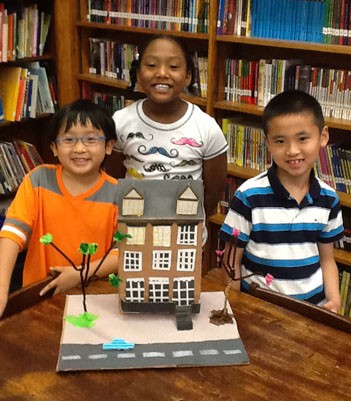by Catherine Teegarden Center for Architecture Foundation
As another school year draws to a close, so, too, have our 2013-14 Learning by Design:NY in-school residencies. The start of summer is the perfect time to reflect on the past year and highlight some of the achievements of the Learning By Design:NY programs.
We offered 81 LBD:NY residencies in 18 schools throughout Brooklyn, Manhattan, and Queens, and served 1,820 students and teachers. Of the 18 schools, nine are Title 1 (low income); we were happy to expand our audience to six new schools this year. Many of the repeat schools are long-term partners who have made the LBD:NY program an integral part of their math, social studies, or language arts curriculum that students and teachers look forward to each year. Programs range in length from three sessions to semester-long programs, with an average of 6 – 8 weeks. Residencies are customized to enrich the existing classroom curriculum, so no two programs are ever quite the same. What they all share, however, is a hands-on approach to teaching students about the built environment, and nurturing their problem-solving skills by giving them a chance to design their own structures.
This year’s participants included a wide range of ages from Kindergarteners at P.S. 3, who learned about the historic architecture of their school’s West Village neighborhood, to 11th and 12th graders at the Urban Assembly School of Design and Construction, who designed houses based on the seven shapes of the Chinese tangram puzzle. Residency topics were also far-ranging, from the architecture of Medieval Europe with 6th graders at P.S. 102 in Queens, who designed their own half-inch scale medieval town houses, to flood-resistant buildings and infrastructure with 5th graders at I.S. 188 on the Lower East Side, who created new designs for the shoreline outside their school building, which was flooded by Hurricane Sandy.
Many of these projects will be on display at the Center for Architecture in “Building Connections,” our annual exhibition of student workin in November 2014. We invite all of our program supporters to join us for the exhibition opening to see how valuable your donations have been to opening young people’s eyes and minds to the world of architecture and design.


